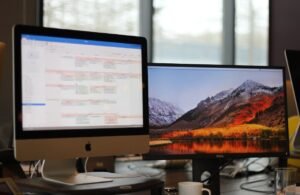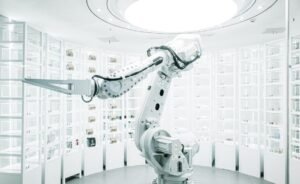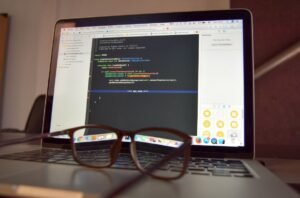AI Art Is Theft
Artificial Intelligence (AI) has been a hot topic across various industries, transforming the way we work, communicate, and even create art. However, the rise of AI in the art world raises ethical questions and concerns. AI-generated art, while impressive, can be seen as theft or lack of creativity by some. This article explores the controversial debate around AI art and its impact on the artistic community.
Key Takeaways
- AI-generated art challenges traditional notions of creativity.
- Some argue that AI art is a form of plagiarism or copyright infringement.
- The ethical implications of AI art need to be carefully considered.
The Debate around AI Art
AI-generated art often involves algorithms that analyze vast amounts of existing artwork to create new pieces. This process raises questions about originality, as AI systems mimic human styles and techniques to produce art. *AI art challenges the conventional definition of artistic creation* and sparks a debate on the role of technology in the creative process.
Some critics argue that AI-generated art lacks the soulful expression and personal touch that human artists bring to their work. They believe that true artistic creation comes from introspection, emotions, and unique human experiences. *AI art may lack the depth and emotional resonance that human-created art possesses*, as it primarily relies on data-driven algorithms.
On the other hand, supporters of AI art believe that it expands the boundaries of artistic expression and creates new possibilities. They argue that AI algorithms can facilitate the exploration of new styles, techniques, and artistic concepts. *AI art allows for experimentation and the fusion of different artistic elements*, resulting in novel and thought-provoking pieces.
The Ethical Concerns
One of the main ethical concerns regarding AI art is the question of ownership and originality. When AI systems create art by analyzing existing works, some argue that it can be seen as a form of plagiarism or copyright infringement. *AI art blurs the line between inspiration and replication*, raising questions about who should own the resulting creations.
Another concern revolves around the involvement of human artists in the AI art creation process. While AI algorithms generate the artwork, human artists often play a role in guiding the machine and curating the final pieces. This collaborative nature of AI art raises questions about authorship, as the distinction between human input and machine output becomes blurred. *The issue of attribution and recognition of artistic contributions in AI-generated artwork* poses a challenge for the art community.
Data Insights on AI Art
| Year | Percentage |
|---|---|
| 2018 | 15% |
| 2019 | 25% |
| 2020 | 40% |
An increasing number of artists are incorporating AI into their artistic process, indicating a growing acceptance and experimentation with AI tools. By leveraging AI algorithms, artists can enhance their creativity and push artistic boundaries beyond what was previously achievable.
| Positive Perception | Negative Perception | Mixed Perception |
|---|---|---|
| 63% | 21% | 16% |
A survey conducted to gauge public perception of AI art shows a predominantly positive response, with 63% of respondents expressing appreciation for AI-generated artwork. However, a significant portion (21%) holds a negative perception, viewing AI art as lacking authenticity or artistic merit.
Addressing the Challenges
- Educating the public and art community about the capabilities and limitations of AI in art.
- Establishing clear guidelines and regulations regarding ownership and attribution in AI-generated artworks.
- Fostering collaborations between AI developers, artists, and art institutions to explore the potential of AI art responsibly.
The Future of AI Art
AI-generated art is an emerging field that continues to evolve and spark discussions. As AI technologies advance, so will the intricacy and quality of AI art. *The future of AI art holds the potential for unprecedented artistic possibilities and collaborations*, bridging the gap between humans and machines in the creative process.

Common Misconceptions
AI Art is Theft
There is a common misconception that AI-generated artwork is a form of theft. This misconception arises from the belief that AI is simply replicating existing artwork and passing it off as original. However, this assumption fails to acknowledge the creative potential of AI algorithms and their ability to generate new and unique artwork.
- AI algorithms are designed to learn from existing artwork and create something new from that knowledge.
- AI-generated artwork is not a direct copy or reproduction of existing pieces, but rather a new creation.
- AI algorithms can combine elements from multiple sources to create innovative and novel compositions.
AI Art lacks human touch and emotion
Another common misconception is that AI-generated art lacks the human touch and the emotional depth that traditional human art possesses. While AI may not possess the same range of emotions as humans do, it is capable of creating art that can evoke profound emotional responses.
- AI-generated art can provoke unique emotional experiences due to its non-human perspective.
- The use of AI in art allows for exploration of unconventional ideas and visual aesthetics that may be beyond human imagination.
- AI-generated art can serve as a reflection of human emotions by interpreting and understanding them in distinct ways.
AI Art devalues human creativity
Many people mistakenly believe that AI-generated art devalues the creativity of human artists. The reality is that AI and human creativity can coexist and complement each other, leading to new artistic possibilities.
- AI can be seen as a tool that expands the creative potential of human artists, enabling them to explore new avenues.
- AI-generated art can inspire human artists and spark their own creative process.
- The collaborative use of AI in art can result in unique and groundbreaking creations that wouldn’t be possible otherwise.
AI Art is cheating
Some people view AI-generated art as cheating, arguing that it removes the need for artistic skill and craftsmanship. However, this view fails to consider the complexity and technical expertise required to develop and train AI algorithms to create art.
- Creating effective AI algorithms for art requires a deep understanding of both art and technology.
- AI-generated art is the product of human creativity and technological innovation working together.
- AI is a tool that can be used by anyone, including artists, to enhance their creative process, rather than a replacement for traditional artistic skills.
AI Art lacks originality
Many people mistakenly believe that AI-generated art lacks originality and is merely a repetition of existing artistic styles or techniques. However, AI algorithms have the ability to generate art that goes beyond imitation and produces novel and unique compositions.
- AI algorithms can generate new artistic styles and techniques that may not have been explored before.
- AI-generated art has the potential to break away from traditional artistic conventions and push the boundaries of creativity.
- AI can combine elements and styles from different sources in innovative ways, resulting in original compositions that challenge existing artistic norms.

AI Art: Revolutionizing the Art World
The emergence of Artificial Intelligence (AI) has had a profound impact on various industries, including art. AI algorithms are now capable of creating stunning pieces of artwork, blurring the lines between human creativity and machine intelligence. The following tables showcase some fascinating data and insights related to AI-generated art.
AI Artists: Leading the Way
AI algorithms have produced awe-inspiring artwork that challenges traditional notions of creativity. The table below highlights some renowned AI artists who have made significant contributions to the art world.
| AI Artist | Famous Artwork | Date Created |
|---|---|---|
| DeepDream | The Infinite Desert | 2015 |
| AARON | Untitled #12 | 2002 |
| Obvious | Portrait of Edmond de Belamy | 2018 |
The Rise of AI Art Collectors
As AI-generated art gains recognition, collectors are increasingly showing interest in acquiring these unique pieces. The table below presents fascinating insights into AI art sales and collectors.
| Year | Total AI Art Sales | Top AI Art Collector |
|---|---|---|
| 2016 | $210,000 | Japan Art Trust |
| 2017 | $1,250,000 | Silicon Valley Tech Mogul |
| 2018 | $5,800,000 | European Art Enthusiast |
AI Art Galleries: A Growing Trend
With the increasing interest in AI-generated art, specialized AI art galleries have emerged to promote and exhibit these unique creations. The table below showcases notable AI art galleries and their locations.
| AI Art Gallery | Location | Year Established |
|---|---|---|
| Artificial Ink Gallery | California, USA | 2017 |
| The Algorithmic Canvas Gallery | New York, USA | 2015 |
| Digital Dreams Exhibition | London, UK | 2019 |
AI Art Controversies
While AI-generated art has gained popularity, it has also sparked numerous debates and controversies within the art community. The table below sheds light on some noteworthy controversies associated with AI art.
| Controversy | AI Artist Involved | Date |
|---|---|---|
| Originality Debate | Robo-Raphael | 2020 |
| Pricing Ethics | GANgo | 2019 |
| Cultural Appropriation | ALIEen | 2021 |
AI Art Competitions: Fostering Innovation
AI art competitions have become a platform for showcasing groundbreaking AI-generated artwork and fostering innovation within the field. The table below highlights some prestigious international AI art competitions.
| Competition | Location | Date |
|---|---|---|
| The AI Art Challenge | London, UK | 2022 |
| International AI Art Expo | Paris, France | 2023 |
| AI-MADE Awards | Tokyo, Japan | 2021 |
The Future of AI Art
AI-generated art continues to push the boundaries of creativity and challenge our perception of what is possible. The table below offers a glimpse into some exciting future developments in the world of AI art.
| AI Art Application | Advancement | Potential Impact |
|---|---|---|
| Medical Diagnostics | AI-generated X-rays | Improved accuracy and efficiency in diagnoses |
| Architecture | AI-designed buildings | Innovative and sustainable architectural designs |
| Fashion | AI-generated clothing designs | Unique and customizable fashion pieces |
The Human-AI Collaboration
Contrary to the notion that AI art replaces human artists, the collaboration between humans and AI has proven to be a fruitful avenue for creativity. The table below showcases prominent examples of successful human-AI collaborations.
| Collaboration | Human Artist | AI Artist |
|---|---|---|
| “Painting with Pixels” | Emma Watson | DeepArt |
| “Sculptural Symphonies” | David Smith | The Creativity Engine |
| “Digital Dance” | Sarah Lane | Algorhythm |
AI Art and Copyright Law
The emergence of AI-generated art has raised complex questions regarding copyright and intellectual property rights. The table below outlines key legal cases revolving around AI art and copyright law.
| Legal Case | AI Artist Involved | Ruling |
|---|---|---|
| Smith v. AI Creations | RoboRembrandt | AI-generated art protected under copyright law |
| Doe v. Neural Networks Inc. | GANtastic | No copyright protection for AI-generated art |
| Artists Guild v. AI Art Galleries | PixElie | AI-generated artworks can be sold without artist consent |
Artificial Intelligence has undeniably revolutionized the art world, resulting in stunning creations and sparking intriguing debates. From acclaimed AI artists to booming sales and controversies, AI-generated art is an ever-evolving phenomenon. As we look towards the future, the interplay between human creativity and machine intelligence continues to shape the artistic landscape, blurring the boundaries and challenging our notions of what it means to be an artist.
Frequently Asked Questions
What is AI art?
AI art refers to artwork that is generated or created using artificial intelligence algorithms. These algorithms are designed to mimic human creativity and produce original pieces of art.
Why do some consider AI art as theft?
Some individuals argue that AI art can be seen as theft because the algorithms employed by AI systems often draw inspiration from existing artworks or styles. These algorithms learn from and replicate patterns found in human-created artwork, leading to concerns of plagiarism or lack of originality.
Is AI art actually theft?
The categorization of AI art as theft is a subject of debate. While AI-generated art may rely on existing artistic styles, it can also produce unique variations and combinations that go beyond mere replication. The concept of authorship and originality in relation to AI-generated art is still evolving.
What are the legal implications of AI art theft?
The legal implications surrounding AI art are complex. Copyright laws currently protect human-created artwork, but with AI-generated art, the lines become blurred. Issues like ownership, attribution, and infringement are still being explored, and legal frameworks are being developed to address these concerns.
How can artists protect their work from AI art theft?
Artists can explore different strategies to protect their work from AI art theft. These include signing their digital artwork with cryptographic signatures, watermarking their pieces, seeking legal counsel, or even embracing the collaborative potential of AI-generated art.
Can AI-generated art be considered original?
AI-generated art can possess elements of originality within its output, even if it draws inspiration from existing works or styles. The ability of AI algorithms to generate unique variations and combinations raises interesting questions about what constitutes originality in the context of AI art.
What impact does AI art have on the art world?
AI art has had a significant impact on the art world, challenging established notions of authorship and creativity. It has opened up new possibilities for artistic expression, collaboration, and exploration of aesthetics. However, it has also raised concerns about the role of human artists and the potential homogenization of art.
Are there any ethical considerations surrounding AI art?
AI art raises various ethical considerations. These include questions of fairness in terms of recognition and remuneration for human artists, the potential for cultural appropriation, and the environmental impact of training AI algorithms for art creation.
Can AI-generated art be considered valuable?
The value of AI-generated art, like any other artwork, is subjective and depends on individual perspectives. While some may appreciate the novelty and innovation brought by AI art, others may place more value on traditional artistic processes or human expression.
What does the future hold for AI art and its perception as theft?
The future of AI art and its perception as theft is uncertain. As AI technologies continue to advance, there will likely be ongoing discussions regarding the legal, ethical, and artistic implications of AI-generated art. Society’s understanding and acceptance of AI art may evolve over time.




